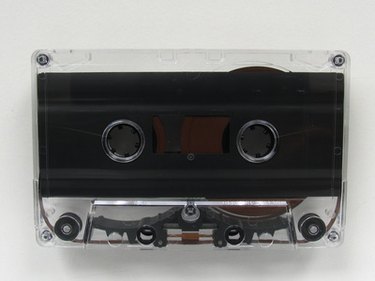
German inventor Fritz Pfleumer patented Magnetic tape in 1928. Specifically, the patent was for the placement of magnetic powders on strips of paper or film, initially for audio recording purposes. Over the next 30 years, magnetic tape production technology, as well as the technology to record and play back magnetic tape, became more refined, practical, and affordable. As magnetic tape technology evolved, its uses diversified, branching out beyond audio application.
Audio Tape
Video of the Day
The Phillips Company introduced the first small-cartridge cassette tapes and portable tape recorders to the public in the early 1960s. It was around this time that the eight-track magnetic audio tape came on the market. When introduced, both forms of media were cost prohibitive for the average consumer. The early 1970s brought Dolby noise reduction technology to audiocassette tapes, along with a much lower price tag.
Video of the Day
Eight-track audio magnetic tapes were very popular through the 1970s, until their discontinuance around 1980. Cassette audio magnetic tape would remain popular until the late 1980s, when CDs rapidly began to overtake cassette sales.
Video Tape
Ampex introduced the first functional, mass-produced video tape recorder, the VRX-1000, in 1956. The first video tapes and recorders were even more expensive upon their inception than audio magnetic tape technology. Major television networks bought and used them. The first video magnetic tapes cost around $2,000, and users could only play them about 30 times before the oxide surface corroded.
The first cartridge-enclosed video tapes and tape recorders for home use went on the market in the mid-1960s through Sony and Phillips. It wasn't until the late 1970s and early 1980s that cartridge video tapes and playback machines became affordable and user-friendly for home use.
Data Storage Tape
The first use of magnetic tape for storing data occurred in 1951 on a proto-computer called the Mauchly-Eckert UNIVAC I. The U.S. Census Bureau bought and used the first UNIVAC machine for data analysis and storage.
Magnetic tape material initially used for data storage purposes consisted of a half-inch wide ribbon of nickel-plated bronze. By the 1950s, IBM was producing computers using the more practical and cost-effective oxide-coated magnetic tape for storing data.